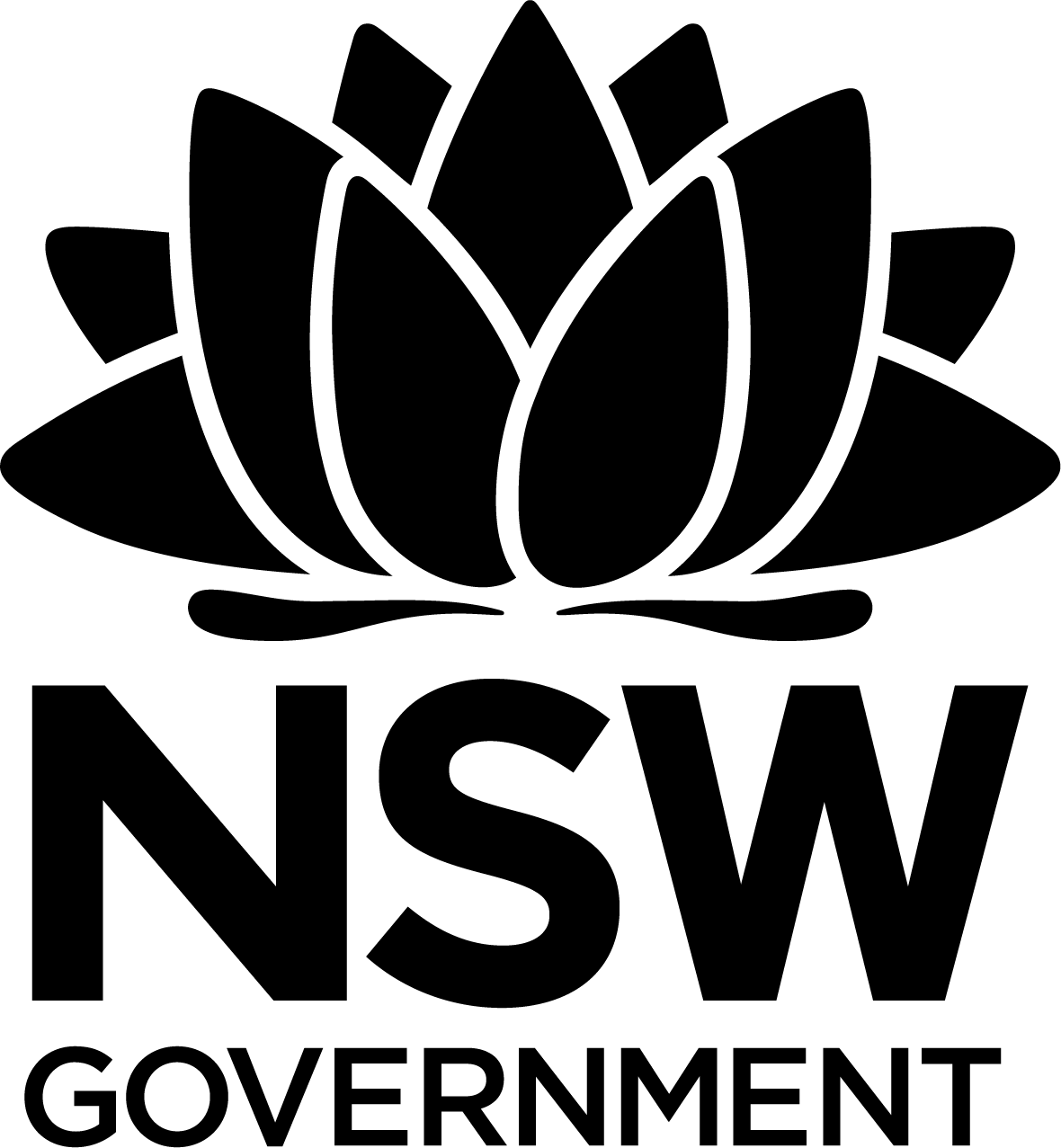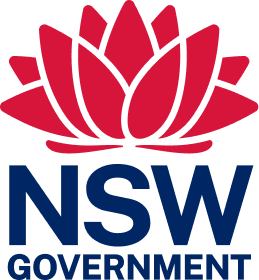
Crown land manager resource
Financial activities – getting started
Crown land managers (CLMs) must be diligent in how they use reserve funds, and ensure that all payments and investments are in keeping with the relevant legal requirements (see clause 3.16 of the Crown Land Management Act 2016 and consistent with the use of public monies generally.
CLMs are wholly accountable for the reserve funds under their control, and must ensure they maintain high standards of accountability, transparency and good governance surrounding the use of these funds and expenditure. You must be able to demonstrate that all expenditure and use of funds is reasonable, acceptable, necessary and incurred for the general purposes of the reserve.
Set up a bank account
The Crown Land Management Regulation 2018 (clause 19) requires CLMs to maintain bank records. It is recommended that you set up separate bank account for appointed Crown reserves to manage related income and expenditure activities. For statutory land managers the bank accounts require two signatories and should ideally be the Treasurer, Chairperson or Secretary. For CLMs managed by corporations, banking procedures should be in accordance with the organisation’s established governance arrangements.
Financial record-keeping
CLMs are required to maintain certain financial records along with other records in accordance with the Crown Land Management Regulation 2018 (clause 19). You should regularly review the regulations to ensure you understand your record-keeping responsibilities.
You may keep records on paper, or use an accounting software package or Excel spreadsheets to keep track of all revenues and expenses.
There are several widely available accounting software packages that are easy to use, and have the benefit of producing standard reports and reducing the likelihood of errors. Examples of commonly used accounting software are MYOB, Intuit QuickBooks, Xero, Reckon One and Sage, as well as free accounting software.
The section below outlines how financial records and asset registers should be used, and recommends other records that make the process of managing the reserve easier. Where applicable, manual financial records would not be required where accounting software programs are used by CLMs.
Bank accounts
Electronic banking is strongly encouraged. Login and passwords need to be kept secure. The use of cash and cheque books should be kept to a minimum. Statements should be scrutinised often for any irregular activities and be circulated and discussed as an agenda item at all board meetings.
General ledger
This accounting ‘master’ document is used to record all financial transactions, and keep track of assets and liabilities.
Cash book
The cash book records all receipts and payment transactions made by a business, including cash, cheque and electronic transactions. The cash book is reconciled to bank statements issued by financial institutions. A bank reconciliation is performed to identify any differences, such as unpresented cheques, unbanked receipts, bank charges etc. Information from the cash book is transferred to the general ledger.
Bank deposits
Cash and cheques should not remain unbanked for more than one week. A bank deposit book must be kept for this purpose. You should write the receipt number corresponding to the amount deposited on the butt of the bank deposit book.
Cheque payments
If paying by cheque, it must be signed by two authorised board members or employees, with particulars (date, payee, amount, brief description of payment) written on the cheque butts. Receipts should be obtained and kept for every payment made. No blank cheques should be signed.
Receipts
You must issue a receipt for all cash payments you receive. The receipt book should be printed in duplicate and each form numbered by the printer (not by hand). When you buy a new book, keep a record of the first and last numbers in the book. A convenient place for recording this information is in the front of the cash book. You can buy receipt books from many newsagents.
Wages
Where applicable, the reserve must keep wage records. You can buy a wages book from many newsagents. A more efficient alternative is to use a computer-based accounting system such as Quickbooks or MYOB for recording wages information.
Content of the wages book
In the wages book, each employee must have a separate page showing their net wage and all deductions. You should keep information such as starting date, qualifications, dependants, entitlements, deductions requested and tax payable for each employee. Each employee must be provided with a payslip for each wage payment. Payment for PAYG withholding should be entered into the wages column of the cash book.
Pay as you go (PAYG) withholding
If the CLM has employees, the manager must be registered for PAYG withholding tax. Taxes must be withheld from wage payments made to employees. The amount to be withheld can be determined by referring to the ATO’s PAYG withholding tax tables or calculators, available at the ATO website.
PAYG withholding tax must be paid to the ATO with the activity statement (either a Business Activity Statement or an Instalment Activity Statement). Withholding payments are required as follows:
- quarterly (for small employers – as at 1 January PAYG withholding less than $25,000 a year)
- monthly (for larger employers – as at 1 January PAYG withholding more than $25,000 a year, but less than $1m a year)
- twice weekly (for very large employers – as at 1 January PAYG withholding more than $1 million a year).
Superannuation contributions
If the CLM has eligible employees, the CLM must make superannuation payments for these employees. Each quarter, managers must pay the minimum percentage of employees’ ordinary time earnings in superannuation (ordinary time earnings are the amount an employee earns for their ordinary hours of work). Superannuation payments must be made to complying funds or retirement savings accounts and must be paid before the due date each quarter. These payments are tax-deductible in the financial year they are paid.
Workers compensation
If the CLM has employees, the CLM must have a workers compensation policy to cover employees for workplace-related injuries. For further information refer to the NSW Government’s A workers compensation guide for employers.
Payroll tax
If the CLM’s wage bill exceeds an amount set by the NSW Office of State Revenue (which is $900,000 for 2019–20 financial year, for example), the manager must assess and pay payroll tax. To find out whether you’re liable, check the threshold for payroll tax each year with the NSW Office of State Revenue.
Single Touch Payroll reporting requirements
Single Touch Payroll (STP) is a way of sending tax and superannuation information electronically to the ATO each time your employees are paid. Employers using STP are no longer required to submit annual payment summaries (also known as group certificates) for employees.
Employers’ with 20 or more employees are already required to use the STP reporting method. Employers with 19 or less employees will also be required to meet this requirement from 1 July 2019.
Petty cash
All money must be banked in the CLM’s bank account. However, there may be small items that members or personnel pay for. These sums can be accumulated until they are a substantial amount and a cheque or electronic payment issued to reimburse expenses.
Alternatively, you could use a petty cash float, and maintain a separate petty cash book. A board member, manager or caretaker (known as the petty cash custodian) is responsible for the petty cash float and petty cash book. That person must analyse the petty cash dockets so the type of expense can be disclosed correctly, then write them up in the petty cash book.
Approved petty cash dockets should be used to substantiate a reimbursement of the petty cash. If the petty cash runs low, paid dockets will be summarised for replenishment by the petty cash custodian. Replenishment is done by drawing a cheque from the normal bank account payable to the petty cash custodian, who cashes the cheque and provides cash back to the petty cash float. The signatories to the normal bank account approve the reimbursement. Payments issued from the normal bank account are subsequently recorded in the cash book.
Rent (lease/licence) register
If you receive income from lease or licence fees for the regular use of a reserve, a lease/licence fee register should be maintained. The register will help you monitor payments and identify users who fall into arrears. If this happens, discreet action by the board could reduce problems which tend to escalate if left unchecked.
Large reserves with varied activities may need separate registers for rental of buildings and for ground hire.
Find out about more about leases and licences
Meeting minutes
Meeting minutes capture the essential information of a meeting—decisions and assigned action. They should not be a record of every detail that happened in the meeting. They should, however, be an accurate summary or outline of the key points (i.e. agenda items and sub-items) and the discussion, decisions and actions surrounding them.
It is important to attach or supply the location of any documents and/or additional information if required, especially if referred to in the minutes.
The minutes of the meeting should include the following:
- list of attendees and any apologies for absence
- key points of the meeting (i.e. summarise the discussion surrounding each agenda item and sub-items)
- summary of any decisions and/or proposals made for each agenda item and sub item
- actions required, if any, for each agenda item and sub-item and who is to perform those actions
- for annual general meetings, the presentation and adoption of the annual report and its financial statements.
All minutes are to be signed and dated by the chairperson and countersigned by the secretary as being a true and accurate record.
It is important that all large finance and expenditure decisions including any procurement decisions are minuted at board meetings.
Find out about more about managing board meetings.
Meeting agenda template (MS Word)
Meeting minutes template (MS Word)
Asset register
An asset register allows the board to determine the value of the reserve’s physical property at any time (excluding land). The register should form part of the records and be inspected by a new board or secretary whenever a handover occurs. The asset register template can be used to record all assets located on the reserve.
Value of assets to be included
The asset register must include all assets valued at $5,000 or above, the details of the value of work and improvements undertaken costing more than $5,000 along with details of heritage items. However, if the CLM considers that certain items should be included for stocktake purposes, they may be included.
Compiling the register
The register can be kept in a journal or preferably in an electronic spreadsheet. To compile the register, it is a good idea to perform a stocktake of assets. If the manager has an asset that it did not have to pay for, it must determine an initial value of that asset for recording purposes. The department may be able to assist with initial valuations.
If the reserve has assets in a number of locations, it is a good idea to record the location of each asset, to make future identification easier and to increase the levels of control over assets.
If you use an accounting software, it will have an asset register included.
Stocktaking
A stocktake should be done once a year and the result compared with the asset register. The stocktake should also review the quality of assets to ensure they are in appropriate working condition.
Stocktake results should also be reconciled with the general ledger to ensure the value of all assets is recognised in the reserve’s ledgers.
If a reserve has a large number of assets it should consider using an electronic asset register system.
Taxation
Tax registration
For many activities undertaken by a CLM an Australian Business Number (ABN) will be required. If you have any questions about obtaining an ABN please contact the department. The CLM’s ABN must appear on all invoices issued and on its letterhead.
For CLMs managed by a corporation reserve business will be conducted under the ABN of the appointed corporation. For Crown land managed by a board or administrator the ABN will be obtained for the statutory land manager.
Businesses are required to deduct withholding tax from any payments exceeding $75 (excluding GST) made to another business that does not advise its ABN.
An ABN is also a prerequisite for registration for the goods and services tax (GST). Generally, CLMs are required to register for GST if their current or projected turnover (income) is greater than $75,000 a year. For non-profit organisations the turnover threshold is $150,000 a year. If you wish to be classified as a not-for-profit organisation for tax purposes, ensure you follow the instructions on the ATO website. You are required to complete an annual self-assessment of your not-for-profit status.
If a CLM’s turnover is below the relevant thresholds it is not required to be registered for GST, though it may voluntarily register for GST. This means the reserve can claim back GST credits for the GST paid on purchases made by the CLM—but it must also collect GST on any revenue earned by the reserve. The costs and time required to comply with GST reporting may exceed the benefits for smaller reserves.
A registered business must lodge GST returns either monthly or quarterly via a Business Activity Statement. The net GST (GST collected minus input tax credits) is paid to or claimed back from the ATO at the same time.
The ATO website provides a lot of information about finances and taxation for non-profit groups, including the requirements for being exempt from income tax.
If you have questions about tax issues, you should consult an accountant or the ATO.
Tax return exemptions
On 11 May 2021, the Australian Government announced changes to the administration of Not-For-Profit (NFP) entities that self-assess as income tax exempt. The changes require non-charitable NFPs with an active Australian business number (ABN) to lodge an annual self-review return in order to self-assess as eligible for income tax exemption. The annual reporting requirement came into effect from 1 July 2023 and is designed to enhance transparency and integrity in the system, by ensuring only eligible NFPs access income tax exemption. For further information please refer to the ATO website.
Can a Crown land manager (CLM) be considered an NFP for the purposes of the ATO?
In accordance with s 3.16 of the Crown Land Management Act 2016, a CLM may have the potential to be considered as an NFP entity for the purposes of the Australian Taxation Office (ATO).
What does this change mean for CLMs?
Previously CLMs were able to assess their eligibility for income tax exemptions without an obligation to report to the ATO. As of 1 July 2023, CLMs that have an active ABN and meet the ATO’s eligibility criteria to self-assess as income tax exempt, must lodge a self-review return on an annual basis with the ATO.
How do CLMs lodge self-review returns?
The not-for-profit (NFP) self-review return is available to lodge now using ATO's Online services for business from 1 July 2024.
Non-charitable NFPs may submit their NFP self-review return by phone, using the AtO's self-help service.
If you don’t already have access to ATO's Online Services, submit your return by phoning ATO's self-help service. It is available as an additional way to lodge your NFP self-review return for the 2023–24 transitional year.
To lodge using the self-help phone service, you will need to:
- first review the list of self-review return questions at NFP self-review guide
- record responses to each return question and have these with you when you call
- phone the self-help service on 13 72 26 for NFP self-review return lodgment
- enter the organisation's ABN and a reference number listed on any letter the ATO have posted to your organisation, such as the Your annual self-review reporting obligation notice.
- follow the prompts to record your responses and submit the NFP self-review return questions.
If you have the above details with you when you call, lodgement using the ATO's self-help phone service typically takes around 10 minutes to complete.
Self-help phone service is available if you cannot access Online services for business for the 2023-24 income year. NFPs that are already reporting for GST or PAYG Withholding should lodge using Online services for business for an improved experience
A self-review return can be lodged online or via a CLM’s registered tax agent. For further information visit the ATO website. The ATO have developed a webinar to help eligible NFPs prepare to lodge their self-review return.
When does a self-review return need to be lodged?
The 2023/24 self-review return must be lodged between 1 July and 31 October 2024. Eligible NFPs do not need to lodge a self-review return for any income years prior to the 2023/24 financial year.
Who doesn’t need to lodge an annual self-review return?
Crown land managers that are not NFPs for the purposes of the ATO or are charities registered with the Australian Charities and Not-for-profits Commission (ACNC) and endorsed by the ATO as income tax exempt.
Does this mean that CLMs that self-assess as income tax exempt are exempt from paying all taxes?
No. If a CLM has employees, the CLM will still have legal obligations (under separate provisions of tax law, if applicable) to:
- collect 'pay as you go' (PAYG) withholding amounts from certain payments (for example, payments of salaries and wages)
- comply with any fringe benefits tax (FBT) obligations (although an endorsement for the FBT rebate or exemption may be available in addition to an income tax exemption for certain entities)
- comply with superannuation guarantee obligations and
- Comply with GST reporting obligations, if registered.
Charity status
Generally, statutory land managers cannot be a charity. If you believe that you are a charity for ATO purposes please contact us and we can help you confirm your status.
Legal entity details for statutory land managers
As part of the commencement of the Crown Land Management Act 2016 (CLM Act) in July 2018, the department provided advice that any reserve trust managed by a board or administrator would become a statutory land manager (SLM), and the legal name changed to replace “trust” with “land manager”.
The department notified the Australian Tax Office of the legal name change for SLMs, and updates were made to the Australian Business Register. The following FAQs provides more details on these changes.
What this legal name of our entity?
The legal name for a statutory land manager entity is ‘XYZ Land Manager’. For example, Berrima Court House Land Manager.
Did trading names change?
No changes were made to trading names
For ATO purposes, what is the entity type for a statutory land manager?
Statutory land managers that are registered for an ABN are categorised as an “other incorporated entity” on the Australian Business Register (ABR)
Where can I check the details of the legal name?
We recommend you check your details on the Australian Business Register website.
Our entity doesn’t appear on the ABR. What should I do?
If your entity does not appear on the ABR please contact us.
This Crown land manager web resource was printed on 27 Jul 2024. The information contained in this web resource is based on knowledge and understanding at the time of writing Jul 2024. However, because of advances in knowledge, users are reminded of the need to ensure that the information upon which they rely is up to date and to check the currency of the information by referring to the website (www.reservemanager.nsw.gov.au).
© State of New South Wales through Department of Planning, Industry & Environment 2024.
Page link: https://reservemanager.crownland.nsw.gov.au/administration/financial-activities-getting-started


